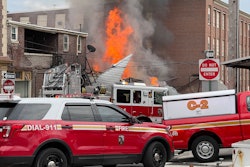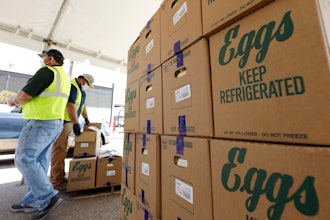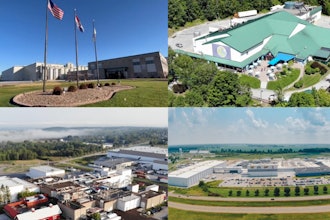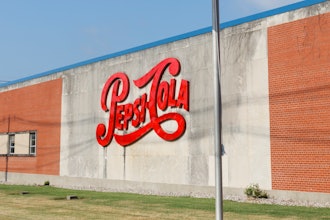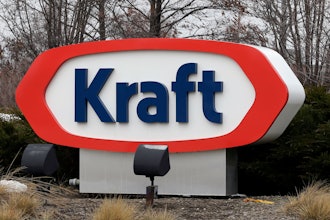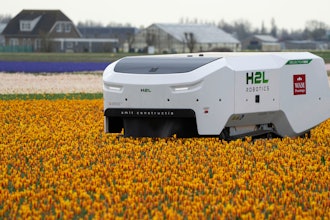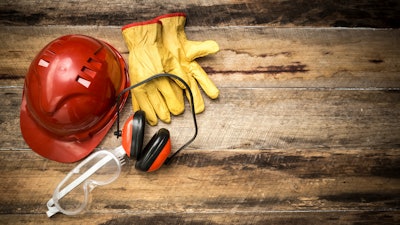
In the United States, the manufacturing sector is projected to grow to $7.96 trillion in 2022, accounting for nearly 11 percent of the country’s economic output. It is an immensely diverse industry, covering a host of different sectors with varying levels of risk. Regardless of the manufacturing facility, there is one constant threat, challenge, and opportunity: safety. The safety of workers, as well as physical assets and surrounding communities, must be a primary concern at all times. Let us delve into six steps to ensure a safe working environment in manufacturing facilities.
1. Think Management Systems
A safety management system provides a firm foundation from which all management of safety issues can flow. There are vitally important aspects to a facility’s safety management system, possibly the most important of which is that it needs to have buy-in by management and workers alike. There are multiple benefits to having a safety management system in place.
Firstly, it ensures that there is compliance with federal, state, and local safety-related laws. Further, it helps minimize injuries in the workplace and helps reduce overall risk, which in turn results in cost savings. Furthermore, a strong safety management system should improve a company’s reputation and overall morale among workers.
2. Know Your Risks
To know your safety-related hazards and risks is to know your facility. There needs to be a thorough risk assessment process that encompasses all activities, processes, equipment, and machinery on a site. The chosen risk methodology needs to be fit for purpose and applied equally throughout the facility and all its processes.
Once all risk assessments have been done, then a facility-wide risk profile can be compiled in which the most significant risks can be prioritized and actioned, as needed. The outcome is a risk profile that is site-appropriate and risk-savvy. Remember this: a half-hearted risk assessment is as good as no risk assessment.
3. A Hierarchical Approach to Safety Controls
The hierarchy of controls will help guide all controls and solutions needed to mitigate assessed risks. It makes sense to mitigate risks using the following hierarchy, in descending order of effectiveness:
- Eliminate the hazard.
- Substitute the hazard with a lesser hazard.
- Engineer the hazard as much as possible to be less hazardous.
- Provide administrative controls, such as policies and procedures or training.
- Provide personal protective equipment (PPE).
A further good rule of thumb is to apply the well-known 80-20 rule or Pareto Principle in your management of safety controls. In safety, it means that 80 percent of your injuries are derived from just 20 percent of your hazards, which is why the focus should be on the highest/most significant hazards. Without a hierarchy of controls, giving order and significance to your risk assessments is severely impaired.
4. Get the Basics Right
A significant portion of your safety hazards and risks will reside in two categories, the first of which is equipment/machinery. These mechanical, electrical, pneumatic, or fuel-run assets can be inherently hazardous, especially if they malfunction. That is why it is important to ensure that there is proper maintenance management in place. Industrial maintenance can come in different forms, whether preventive/proactive (i.e. to try and prevent asset breakdowns) or reactive (i.e. when assets break down), and needs to be properly scheduled.
Workers are your second category of potentially significant risk. Even the best safety management systems cannot entirely account for human error, laxness, laziness, or simply not adhering to given safety procedures. That is why any safety controls that do not require direct human inputs should always be considered first. The management of people and physical assets is critical to your safety system.
5. Safety-Focused Learning
A workforce well-trained in safety is a smarter, and safer workforce. That is why safety-focused learning, which encompasses all onboarding, training, and up-skilling, whether internal or external, should be a constant for all workers. Safety learning should be ongoing and based on the principles of continuous improvement. Safety training in the future will only become more critical, as manufacturing diversifies, automates, and is increasingly pressurized by external factors, such as customer demands.
Furthermore, mentoring at all levels should be embedded in all technical departments. Trainees and newer employees will benefit enormously from being mentored by more senior and experienced colleagues, particularly in regard to safety issues. Know this: a safety learning culture equates to a safer, smarter facility.
6. Open-Minded Zero Tolerance
A zero-tolerance policy regarding non-conformance to safety policies and procedures ensures that safety is taken seriously by all within a facility. Most manufacturing is inherently hazardous, which is why non-compliance to safety can result in serious injury and even death.
However, there needs to also be an open-minded approach to safety management within a facility. Safety management simply cannot be ‘top down’ and absolutist. Management must be open to suggestions from all workers regarding safety. After all, it is the workers who are on the front lines of production and who understand the hazards thereof. They must be free to report near-misses and incidents without fear of reprisals, as McKinsey stressed in its study regarding safety mindsets in industry.
Bottom line: in manufacturing, a zero-tolerance approach is not a nice-to-have, but a must-have.
Manufacturing facilities are often high-risk in terms of safety. Risk is the keyword: everything that management undertakes to improve safety in a facility needs to be focused on its risk profile. Objectives and targets, policies and procedures, training - all of these need to be based on relevant risk factors. Identifying and understanding your safety risks is more than half the battle.
Bryan Christiansen is the founder and CEO of Limble CMMS.





